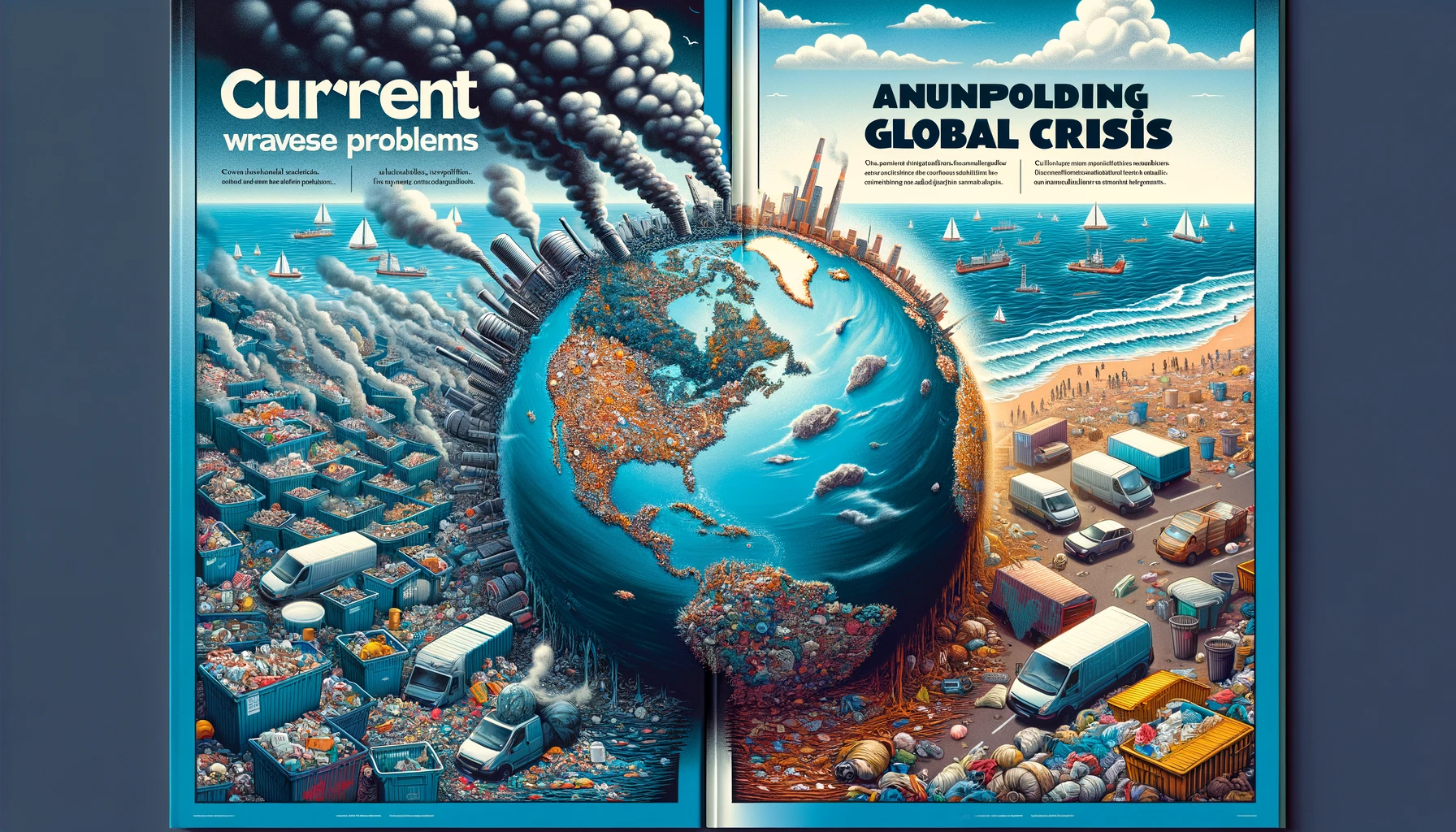Today, societies worldwide are grappling with significant waste problems, driven by population growth, rapid urbanization, and consumption patterns. The global waste generation is projected to increase by 70% by 2050, from 2.01 billion tons in 2016 to 3.40 billion tons, highlighting the scale of this problem (World Bank, 2018).
Waste Mismanagement
One of the primary challenges is waste mismanagement. Despite technological advancements, roughly 33% of the world’s waste is not managed in an environmentally safe manner, leading to land, air, and water pollution (Kaza et al., 2018). In developing countries, the problem is particularly acute, where up to 90% of waste is often dumped or burnt in open areas due to inadequate waste management systems (UNEP, 2019).
Plastic Waste
Plastic waste constitutes a significant fraction of global waste and poses a unique set of challenges. Only 9% of all plastic waste ever produced has been recycled, with the majority ending up in landfills or natural environments, especially oceans, threatening biodiversity and human health (Geyer et al., 2017).
Food Waste
Another significant waste issue is food waste. Approximately one-third of all food produced globally for human consumption, around 1.3 billion tons per year, is lost or wasted, contributing to economic loss, food insecurity, and environmental degradation (FAO, 2011).
E-Waste
Electronic or e-waste is a growing concern due to the rapid advancement in technology and short lifespan of electronic devices. E-waste often contains hazardous materials, and improper disposal can lead to environmental pollution and health problems. Despite its potential for recycling, only 20% of e-waste is formally recycled (Baldé et al., 2017).
Moving Forward
Addressing these waste problems necessitates a multi-faceted, global approach encompassing improved waste management systems, effective policy frameworks, technological innovation, and behavioral change. Key strategies include enhancing waste collection, promoting recycling and composting, reducing single-use items, and encouraging sustainable consumption patterns (World Bank, 2018).
In conclusion, waste problems represent a complex, global challenge with significant implications for the environment and human health. Through coordinated action and sustainable practices, we can mitigate these issues and move toward a circular economy, where waste is not the end of the line but a resource for new beginnings.
References
- World Bank. (2018). What a Waste 2.0: A Global Snapshot of Solid Waste Management to 2050.
- Kaza, S., Yao, L. C., Bhada-Tata, P., & Van Woerden, F. (2018). What a Waste 2.0: A Global Snapshot of Solid Waste Management to 2050. Urban Development. Washington, DC: World Bank.
- United Nations Environment Programme (UNEP). (2019). Global Waste Management Outlook.
- Geyer, R., Jambeck, J. R., & Law, K. L. (2017). Production, use, and fate of all plastics ever made. Science Advances, 3(7), e1700782.
- Food and Agriculture Organization (FAO). (2011). Global Food Losses and Food Waste – Extent, Causes and Prevention. Rome.
- Baldé, C. P., Forti, V., Gray, V., Kuehr, R., & Stegmann, P. (2017). The Global E-Waste Monitor – 2017. United Nations University (UNU), International Telecommunication Union (ITU) & International Solid Waste Association (ISWA).


